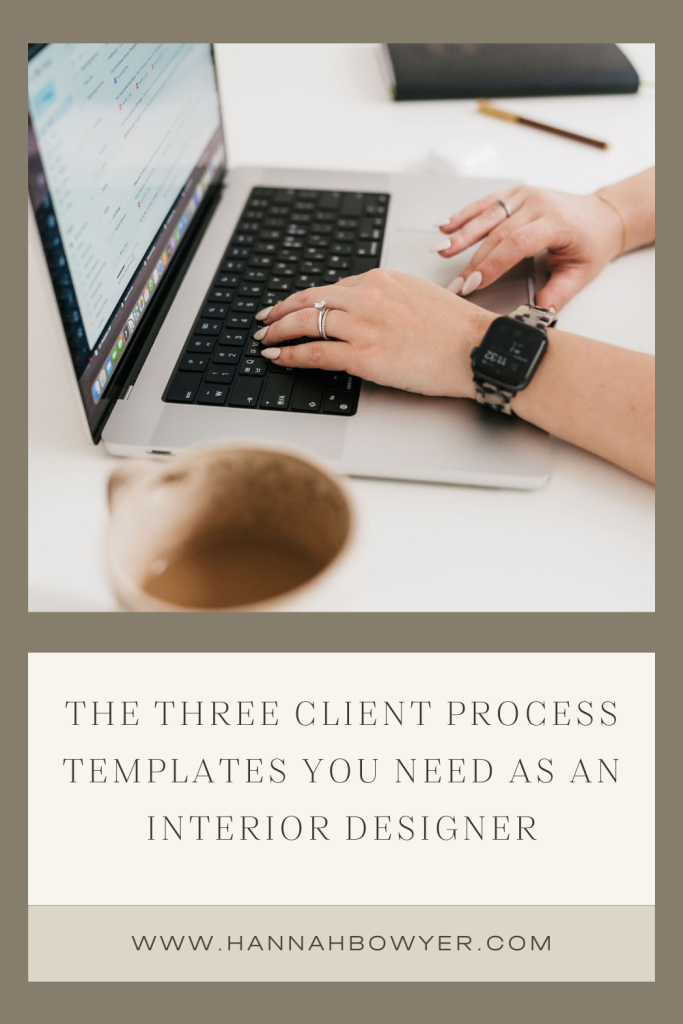As an interior designer, your job is to create beautiful spaces for your clients while providing them with a seamless and stress-free experience. One of the best ways to achieve this is by templating your process. These templates help you stay organized and provide your clients with clear expectations of the project timelines and costs. In this blog post, we’ll explore the three client process templates that every interior designer should use to create a smooth client experience, from email templates to investment guide templates and welcome guides.

Email Templates
The importance of email communication during an interior design project cannot be overstated. With so much to keep track of, it’s essential to have a system that ensures clear and consistent communication. Creating email templates can streamline this process and help you to save time. Having templates ready for each typical step in your client process ensures that the client will get a timely response or update. You can have these email templates setup in Gmail, or you can have them in a CRM like Dubsado. One example of an email template is an initial consultation email template that outlines how to schedule, what the consultation includes, what the client needs to bring, and any other relevant details about the meeting. Another example is a weekly email template that will ensure your client is getting consistent updates. Consistency in your communication will help the client to trust your professionalism and give them a clear understanding of the design process.
Over in the Hannah & Bowyer Co. Shop, we have email templates that include 15+ essential emails for each step of your client process.
Investment Guide Template
One of the trickiest parts of the interior design process is managing client expectations around costs. An investment guide template can help to mitigate this issue. This template will give your clients a clear understanding of how much they could invest in your services and how much they should estimate to spend on implementation. The investment guide template should also outline additional expenses, such as project management or procurement fees. With a transparent guide on investment, clients can feel more confident in their project’s budget and trust that you are working in their best interest. It also helps eliminate any difficult conversations down the road about the budget.
Over in the Hannah & Bowyer Co. Shop, we have created an Investment Guide Template so that you can easily have a beautifully branded document spelling out all the details of your process, team, and costs. This is an easy click-and-drag template to be used in Canva.
Welcome Guide Template
Once the proposal has been accepted and the agreement signed, the first step is to provide a welcome guide template to your clients; this template should outline the design process, the project timeline, and what the clients should expect from you as the designer. This guide can also include any other relevant details relating to the project, such as the contact details for subcontractors or preferred vendors. Finally, end the welcome guide by showing gratitude to the clients for entrusting their project to you. This will ensure a good starting point for the project and establish a trust-based relationship.
Over in the Hannah & Bowyer Co. Shop, we have created a Welcome Guide Template so that you can easily have a beautifully branded document to set expectations. This is an easy click-and-drag template to be used in Canva.
Using process templates in interior design can make all the difference in the success and efficiency of your projects. With email templates, investment guides, and welcome guides in place, you can provide clear and transparent communication to your clients, saving you time and stress. Templates can also help your clients to understand the design process, manage their expectations, and trust your skills and professionalism as an interior designer. Investing time in creating these templates can ultimately lead to more successful and profitable projects and an overall positive client experience.

